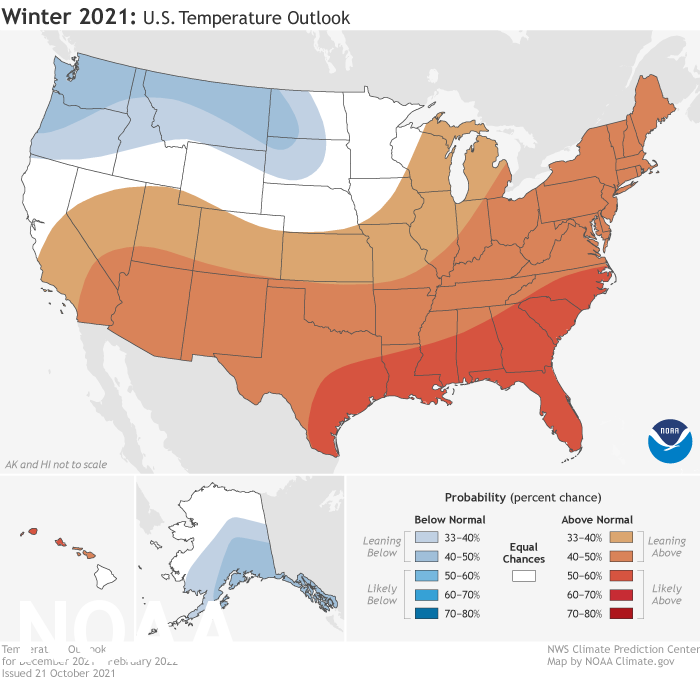NOAA's winter weather outlook: Above-average temperatures in South and East, thanks to La Niña
Love it or hate it, winter is coming.
And federal forecasters have some good news for folks who detest the coldest time of the year.
Above-average temperatures are predicted across the South and most of the eastern U.S. as La Niña climate conditions have emerged for the second winter in a row, according to NOAA’s Climate Prediction Center.
La Niña, a natural cooling of sea water in the tropical Pacific Ocean, has recently formed, forecasters said Thursday. The climate pattern affects the position of the jet stream and thus the weather across all of North America.
NOAA said this year's La Niña (Spanish for “little girl”) probably will persist through the winter.
In NOAA’s 2021 winter outlook, which extends from December 2021 through February 2022, more snow and rain than average is expected across portions of the northern U.S., primarily in the Pacific Northwest, northern Rockies, Great Lakes and Ohio Valley.
Heating bills: Why your heating bill could skyrocket this winter: What to know about hikes in natural gas prices
That's good news for the drought-plagued portions of the northwestern U.S.
But the big Northeast snowstorms and blizzards – which can paralyze cities from Boston to Washington, D.C. – tend to be less common during La Niña winters, said Jon Gottschalck of NOAA’s Climate Prediction Center during a media briefing.
“Consistent with typical La Niña conditions during winter months, we anticipate below-normal temperatures along portions of the northern tier of the U.S. while much of the South experiences above-normal temperatures,” said Gottschalck.
La Niña is back: What does this mean for our winter weather?
"The Southwest will certainly remain a region of concern as we anticipate below-normal precipitation where drought conditions continue in most areas," he said.
Drought conditions are forecast to persist and develop in the Southwest and Southern Plains, NOAA said.
NOAA's seasonal outlooks provide the likelihood that temperatures and total precipitation amounts will be above-, near- or below-average, and how drought conditions are anticipated to change in the months ahead.
"The outlook does not project seasonal snowfall accumulations as snow forecasts are generally not predictable more than a week in advance," NOAA said in a news release.

This article originally appeared on USA TODAY: NOAA winter forecast: Warmer than average across South, East.

